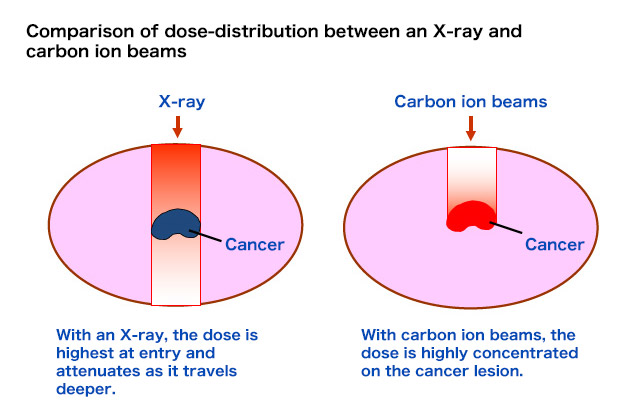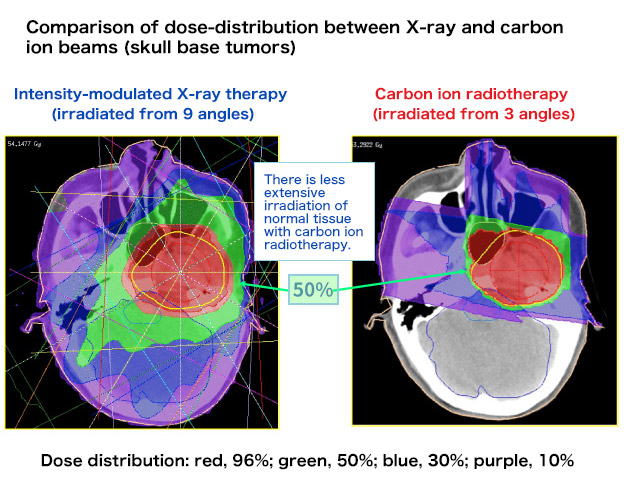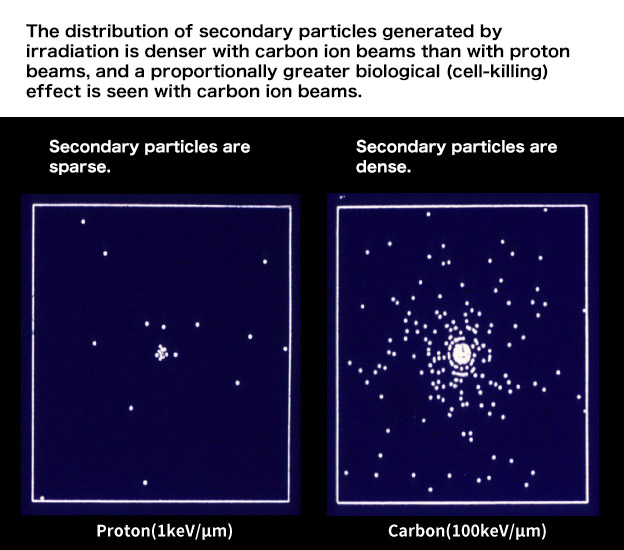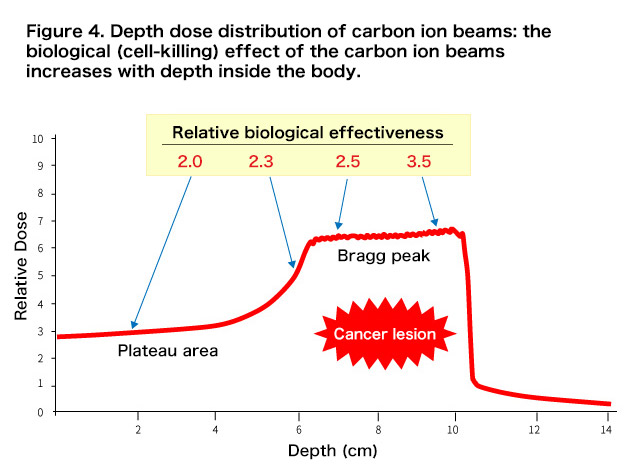What is Carbon Ion Radiotherapy?
Characteristics of carbon ion radiotherapy
Since carbon ion radiotherapy uses carbon particles which are 12 times heavier than protons, it possesses properties that make it suitable for the treatment of cancer due to its improved physical dose distribution and biological effects.
- The in vivo formation of high-dose areas (referred to as “Bragg peaks”) makes irradiation targeting the cancer lesion easier than with conventional X-rays and also minimizes adverse effects on the surrounding healthy tissue.
- The biological (cell killing) effect of the peak area is 2 to 3 times greater than X-rays or proton beams and the treatment is therefore also effective for cancers showing resistance to conventional X-rays.
- The properties referred to in 1 and 2 above are manifested in a form suitable for the treatment of cancer. In short, the biological (cell killing) effect of carbon ions is characterized by being minimal when close to the surface of the body but increasing with penetration to a maximum in the peak area. Accordingly, aligning the carbon ion peak area with the location and size of the lesion means that both physically and biologically a greater dosage (impact) can be given to the lesion instead of to the surrounding healthy tissue.




 OPEN
OPEN